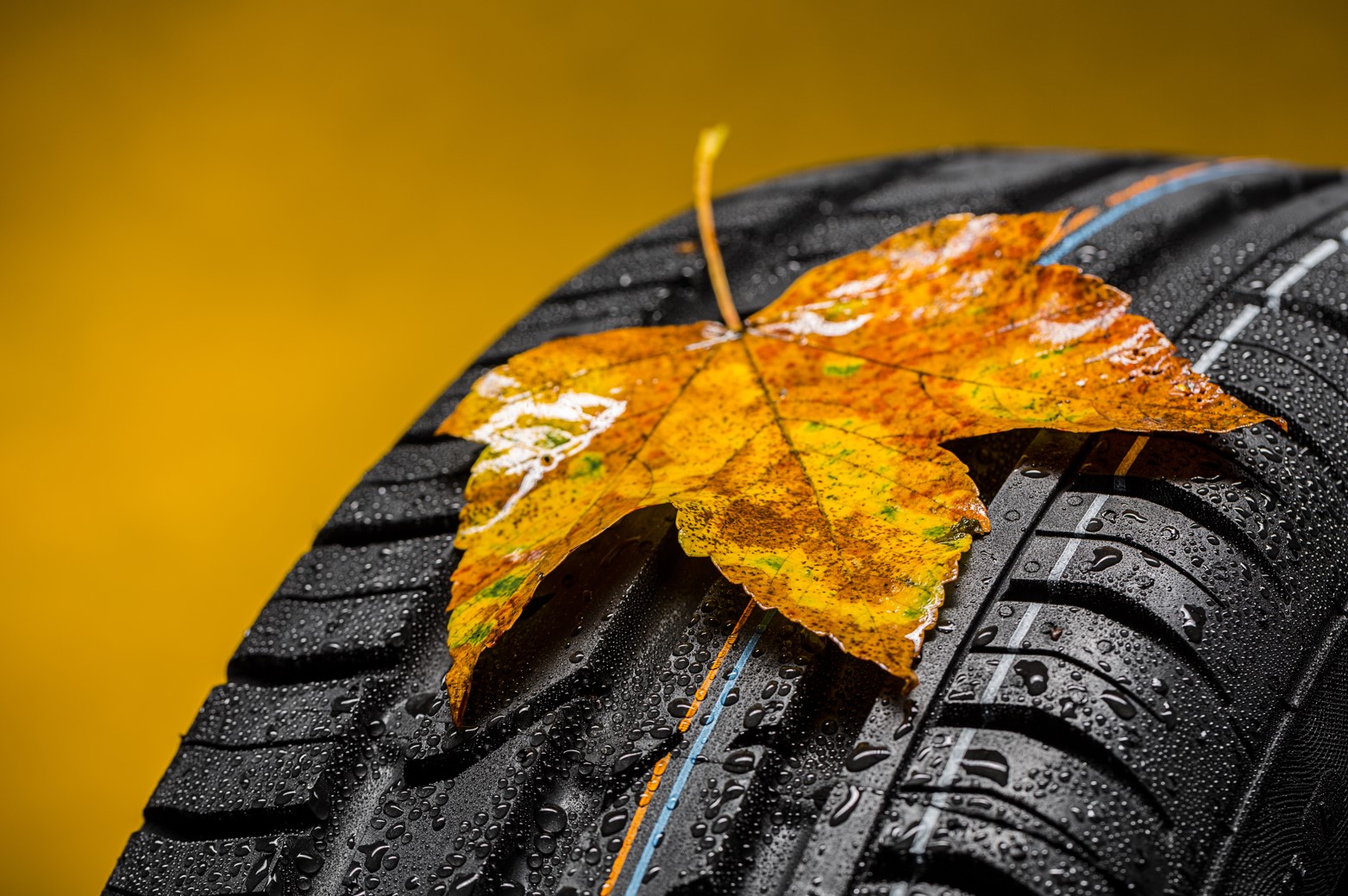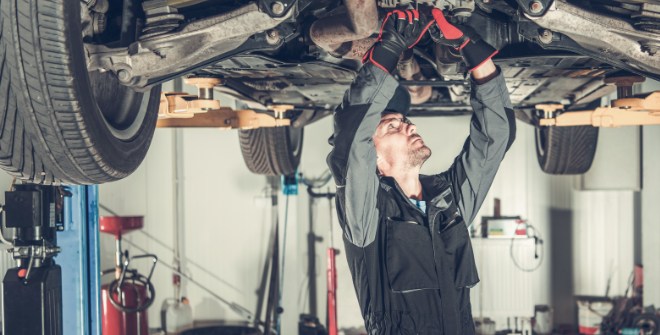Important Things You Need to Know About Tire Tread

Tires have a big responsibility when it comes to your car’s operation. Tires provide the friction needed for acceleration, braking, and turning, and even help make your ride smoother by absorbing some of the shock and vibration from small bumps in the road.
However, without tread, your tires would fail to accomplish these important things. The tread is the part of your tire that makes contact with the road, and is usually distinguished by a pattern cut into the rubber.
What exactly does the tread do? Why is it so important? Read on to get these answers and more, as we discuss four facts you should know about tire tread.
Tire Tread Makes Driving in Rain Safer
The purpose of a tire is to provide friction between your car and the road it’s driving on. The more surface area touching the road, the more friction created. You may be wondering–wouldn’t cutting a tread into tires actually reduce friction? While this is technically true, at the same time the tread is a trade-off that makes your tire safer for varying weather conditions. Without tread, water or moisture on the road doesn’t have anywhere to displace to, and can cause your tires to float over the road—a dangerous phenomenon known as hydroplaning.
Treads give water and moisture somewhere to filter into, ensuring that your tires continue to stay on the road, even when the road has a considerable amount of water on it. While wet roads are still more dangerous to drive on than dry ones, they’re far safer thanks to tire treads.
Different Tread Patterns Are Better for Different Driving Needs
If you’ve ever been to a tire shop, you know full well that there’s no such thing as a universal tire tread pattern. In fact, it may seem as though there are too many different tire tread patterns to count. The biggest reason for so many pattern variations is that different treads are better for different uses. Tires designed for off-road use with SUVs or trucks will have deep, thick treads that are designed to dig into dirt and mud. Tires designed for autocross or performance on-road driving will often have thin treads with as much road-contacting surface as possible. All-season tires will often a combination of deeper treads for safety along with a good chunk of rubber touching the road for the best mix of performance and longevity.
Which type of tread is right for you? It simply depends on what type of performance you’re looking for. Everyone has different driving styles, goals, and budgets, and that influences the type of tire you purchase. Specialty tires such as high-performance or off-road tires will often cost more, while more general-purpose or daily-driver tires may offer you a better value and longevity at the expense of enhanced performance.
Tire Tread Is a Great Indicator of Tire Wear
Because tires are responsible for providing you with friction, they gradually wear out over time and will need to be replaced. How can you tell how much your tires have worn down? Simple: look at your tire tread. The National Highway Traffic Safety Administration’s current guidelines indicate that tires should be replaced when they reach a tread depth of 1/16th of an inch. While most people can’t eyeball 1/16th of an inch, there is an easy test you can perform using only a penny. Take a penny and stick it into your tire tread with Lincoln’s head facing down into the tire. If you can see the top of Lincoln’s head, your tires need to be replaced.
However, while 1/16” is the advised limitation, we advise replacing your tires when the tread reaches approximately 1/8”, as this is when treads begin to get so thin that they start losing their ability to properly redirect water away from your tire’s surface.
Uneven Tread Wear Shortens the Life of Your Tires
When you take proper care of your tires, they can last for tens of thousands of miles before needing replacement. However, the overwhelming many drivers don’t take the time to properly care for and maintain their tires. This leads to improper contact with the road, faster wear and tear on certain parts of your tire, and the need for premature replacement.
Here are a few quick tire maintenance tips to help your tires last longer:
- Keep your tires properly inflated. Check your door jam to see how much air you should have in your tires at all times, and keep your air within that operating range. This will improve your tire life and even help with gas mileage.
- Rotate your tires around every 6,000 to 7,000 miles. This helps ensure that your tires wear evenly and that no particular tire wears faster than the others.
- Have your alignment checked. Misaligned tires don’t contact the road evenly, which translates to faster wear as well as reduced safety.
About Christian Brothers Automotive
Christian Brothers Automotive is your choice for all your car care needs. When it comes to tires, we offer top-notch maintenance and alignment services. We can even help with tire rotations to keep them at their best as the miles roll by.
Schedule your tire service with the team at Christian Brothers Automotive! Call your local shop today.
Published by, Christian Brothers Automotive


[1].jpg)
[2].jpg)
sunwash-tech-with-customer.png)
